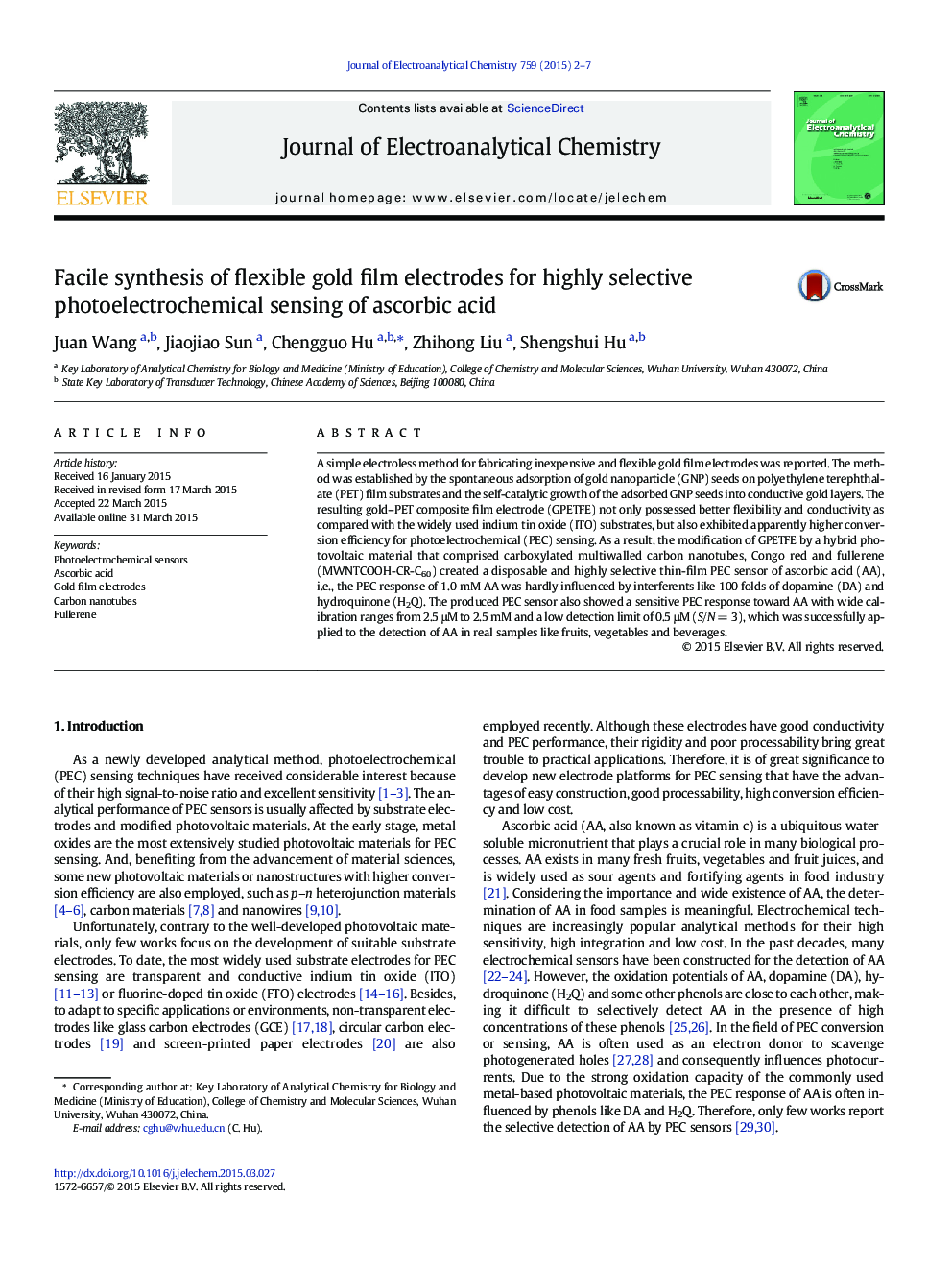| Article ID | Journal | Published Year | Pages | File Type |
|---|---|---|---|---|
| 218124 | Journal of Electroanalytical Chemistry | 2015 | 6 Pages |
•A gold–PET film electrode (GPETFE) was fabricated by a simple electroless method.•GPETFE modified with a carbon photovoltaic material creates a new PEC sensor.•This PEC sensor was applied to the selective detection of AA in food samples.
A simple electroless method for fabricating inexpensive and flexible gold film electrodes was reported. The method was established by the spontaneous adsorption of gold nanoparticle (GNP) seeds on polyethylene terephthalate (PET) film substrates and the self-catalytic growth of the adsorbed GNP seeds into conductive gold layers. The resulting gold–PET composite film electrode (GPETFE) not only possessed better flexibility and conductivity as compared with the widely used indium tin oxide (ITO) substrates, but also exhibited apparently higher conversion efficiency for photoelectrochemical (PEC) sensing. As a result, the modification of GPETFE by a hybrid photovoltaic material that comprised carboxylated multiwalled carbon nanotubes, Congo red and fullerene (MWNTCOOH-CR-C60) created a disposable and highly selective thin-film PEC sensor of ascorbic acid (AA), i.e., the PEC response of 1.0 mM AA was hardly influenced by interferents like 100 folds of dopamine (DA) and hydroquinone (H2Q). The produced PEC sensor also showed a sensitive PEC response toward AA with wide calibration ranges from 2.5 μM to 2.5 mM and a low detection limit of 0.5 μM (S/N = 3), which was successfully applied to the detection of AA in real samples like fruits, vegetables and beverages.
Graphical abstractFigure optionsDownload full-size imageDownload as PowerPoint slide
